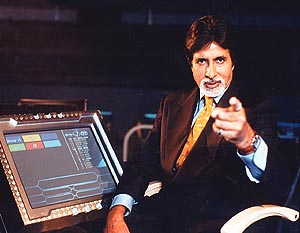Between the Danish cartoons and the Da Vinci Code the Times of India changed its stance on freedom of expression, writes Jerry Thomas.
The Times of India, in its editorial titled ‘Competitive Faith’ has rightly defended the screening of the movie ‘Da Vinci Code’. In writing this, it argued as the champion of freedom of expression and religious pluralism. Few with democratic impulses would object to it. However, when one compares this championing of democratic pluralism with its editorial titled "Danish cartoons provoke violent protests in Muslim world" published a few months back; cracks appear in the heroic posture of the newspaper.
From ‘Danish cartoons provoke violent protests in Muslim world’:
(http://timesofindia.indiatimes.com/articleshow/msid-1408575,curpg-1.cms )
It began by writing "The right to freedom of expression is not an absolute right. All rights, legal and moral, come with responsibilities that contextualise them. A right can qualify to be so only if it is exercised with responsibility, to the individual and society. The right to freedom of expression can be no exception.
The current controversy over cartoons featuring Prophet Mohammad misses this point. Certainly, that does not justify the violent response to the insensitive depiction of Islam.
But to defend an act that has provoked people across the world to react with indignation, under the ruse of freedom of expression, is to misunderstand the right. (emphasis mine)
Here the blame was squarely put on those who asked for publishing the cartoons and Times of India supported its complete censorship in all media.
From ‘Competitive Faith’:
(http://timesofindia.indiatimes.com/articleshow/1529128.cms)
In the editorial defending the screening of the Da Vinci Code, however, ToI blamed all those asked for its complete censorship. It wrote, "In asking for a ban, Christian groups in India have crossed the boundaries of civil protest."
It continued it pretentious championing, "A ban on any work of art, particularly one that doesn't purport to stoke animosities between different religious or ethnic groups, is untenable in a democracy such as ours. Christian groups are, of course, free to peacefully protest against the film and even boycott it if they so wish.
But they must not demand a ban let alone call for punitive action against Dan Brown. The state, too, must not give in to these protests."
From ‘Danish cartoons provoke violent protests in Muslim world’:
Again, during the Danish cartoons protest (or riots), ToI lectured on how the freedom of expression, especially when it touches the matters of faith, should be all the more responsible.
It wrote, "Rights, especially when they touch upon issues of faith, can have repercussions beyond the confines of geography and culture.
Unfortunately, those who champion the right to freedom of expression tend to forget this. The result is a skewed debate. Take the argument that any compromise on the right to freedom of expression will kill the space for dissent.
Can dissent be discussed as an abstract category without taking into account concrete realities? If a cartoon, a novel or a painting can provoke bloodshed, it is insensitive to insist on its dissemination in the public sphere."
From ‘Competitive Faith’:
TOI again changed its tone during the Da Vinci Code by writing, "Far too many times fundamentalists belonging to different persuasions have held the state to ransom and succeeded in enforcing a ban on controversial books and films.
Every time that happens it represents a step back for freedom of speech and artistic expression. At the same time it deals a body blow to religious pluralism and tolerance."
From ‘Danish cartoons provoke violent protests in Muslim world’:
The Times of India concluded by defending its stance of complete censorship on cartoons as a matter of principle and not even as stance out of fear or pragmatism. It wrote, “This is neither a compromise arising out of fear nor mere pragmatism; it is being sensitive to a difference of opinion, or to the prospect of lives being lost. That balance can be maintained even while criticizing the climate of intolerance, if there is any.” (All emphases are mine)
As a born again Christian, I support the right of Danish cartoonists to ridicule and Dan Brown’s right to blaspheme. However, can someone explain to me the contradictions (or the sudden change in its principles) in the editorials of The Times of India. Let the Truth Prevail.
{moscomment}




